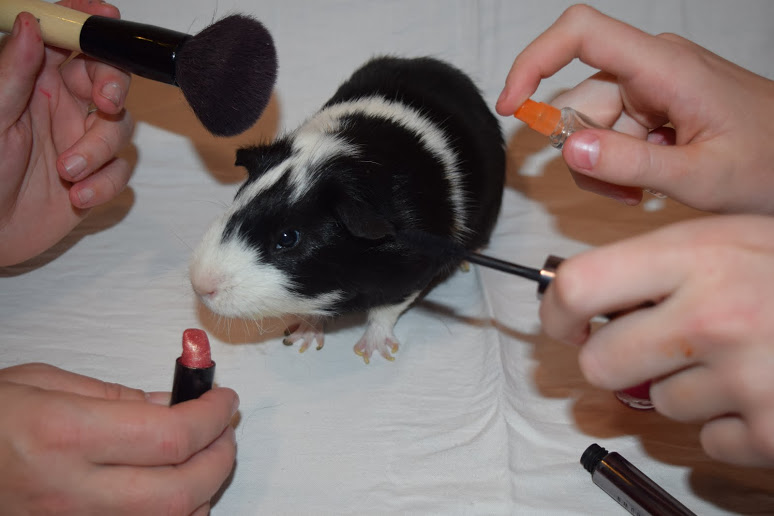The Price We Pay For Products
Photo by Olivia B.
January 13, 2016
Your Covergirl mascara. Your Colgate toothpaste. MAC palettes, Windex, even Band Aids and Post-It notes. What is the price you would pay for these? $10, $15, a life?
Animal testing. We never see it, or even hear from it, so it’s not really a problem anymore, right? Wrong. And we couldn’t be more incorrect. It’s still at large, and each year, about 100 million or more animals are killed for the sole purpose of testing. How can we love the dogs, cats, hamsters and other animals in our home, yet allow so many to suffer from the effects of this practice? We need to wake up, and realize what’s happening behind laboratory doors.
The problem truly is that so many people just don’t know how their daily products came to be on store shelves. According to the Food and Drug Administration, phrases like “cruelty free” and “not tested on animals” are unrestricted, and because they don’t have a true definition, companies can use them as they please, regardless of how misleading they can be.
The act of testing these animals simply because we consider their lives “worth less” than ours is an act of speciesism on some levels. In 2010,the USDA found that 97,123 animals endured pain during testing, without being provided anesthesia.
How can we torture innocent animals for our gain, only because they don’t have the same cognitive abilities as us?
So, what’s being done to them? To test eye irritation from shampoos and cosmetics, companies sometimes use the Draize Eye Test, in which a rabbit’s eyes are held open by clips, and have the chemical being tested applied to their eyes. They can be left in this position for hours. To test what the lethal dose of a chemical is, they give the animals large doses of the chemical. This test is called LD50, because it finds out what dose will kill 50% of the test subjects.
Animals are actually not even the best way to test products. The anatomy, cellular, and even metabolic differences between us and animals are very different, and some of the drugs that are safe for animals can cause major problems for humans. Take, for example, thalidomide, a sleeping pill developed in the 1950s. It was tested on many animal species, but when released to humans, it caused around 10,000 babies to have birth defects. But alternatives to animal testing do exist. It’s 2015, and we can use the cells from blood, to see how a chemical reacts with it. We have also developed artificial skin, organ models, and there are computer programs that virtually model the human molecular structures, that can help scientists to predict the outcome of a chemical, before we need to test it on a physical being.
More alternatives are being developed every day, yet more animals not protected by the Animal Welfare Act are being thrown behind lab doors, and tortured for your everyday products. If we all just choose to buy one product from an animal friendly company, we could be saving a life.

